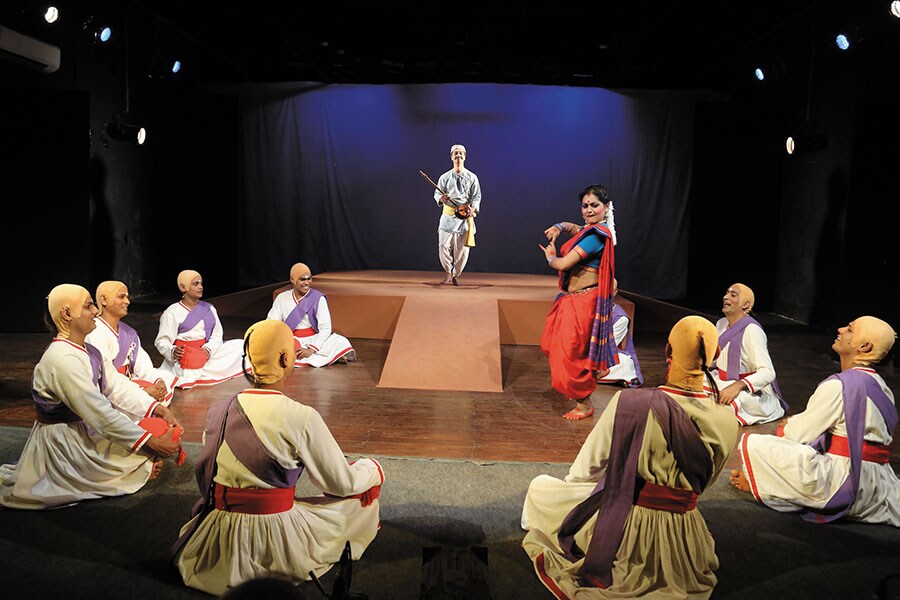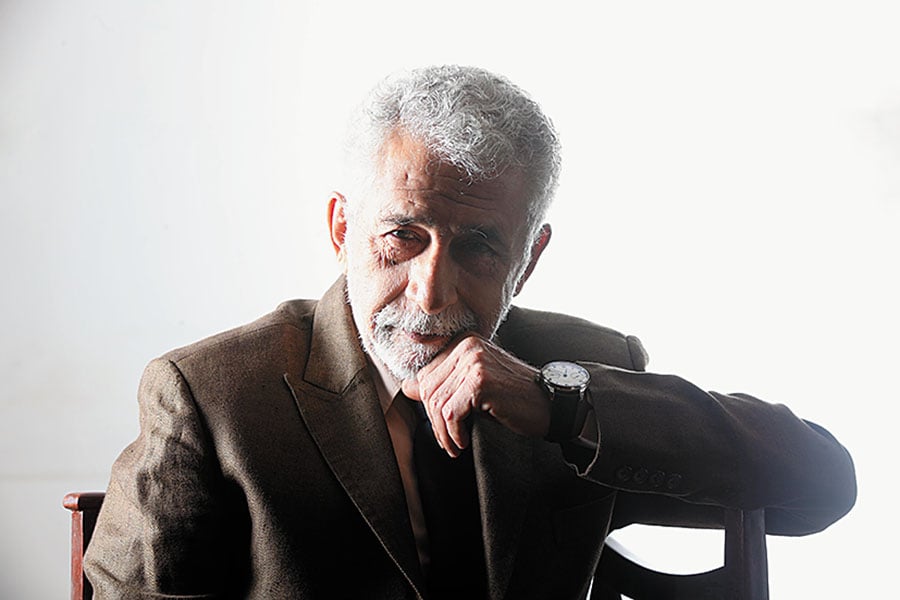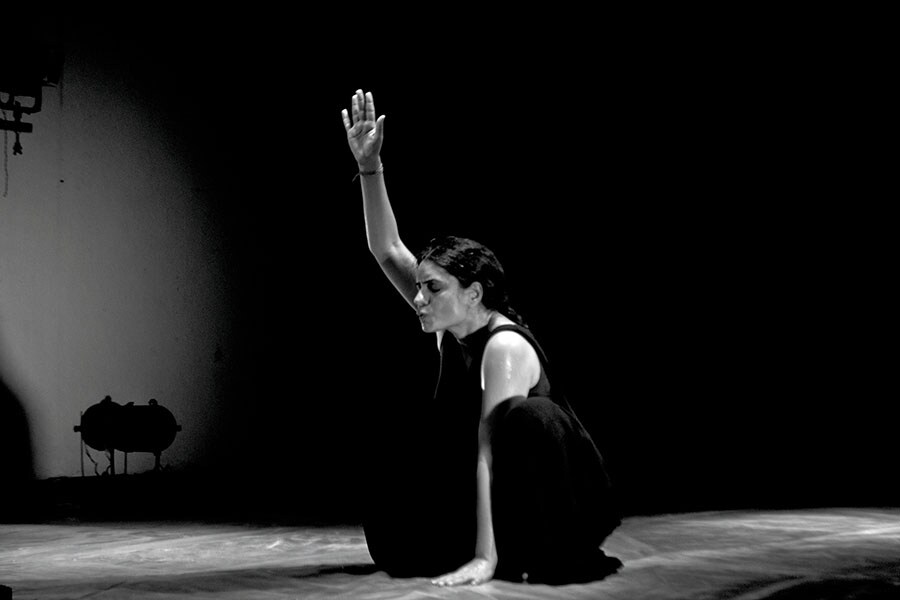Theatre festivals: A nascent stage
They play a crucial role in the ecosystem, but are still a work-in-progress in India
_s.jpg?im=Resize,width=500,aspect=fit,type=normal)
_s.jpg?im=Resize,width=500,aspect=fit,type=normal)
 Ghasiram Kotwal was staged at the recently-concluded Theatre Olympics
Ghasiram Kotwal was staged at the recently-concluded Theatre Olympics
The ground reality that theatre companies, whether exemplary or run-of-the-mill, have to come to terms with is the sporadic and often unpredictable exhibition of their works. Arguably, theatre is a self-limiting niche: Sans big names, or an overriding entertainment quotient, or the rare critical buzz, even limited runs of plays (from one to five performances) often struggle for audiences. Friends and family can pack premieres to the rafters, but footfalls soon peter out to nothing till the next set of shows, when interest is considered to have piqued once again.Productions do not have ‘homes’ as such, but are created with an eye on portability each outing might be in a different venue, because availability is hard to come by. Unless you can fill the stalls like Naseeruddin Shah or Rajat Kapoor, whose well-regarded stage works receive an undeniable fillip from their august reputations elsewhere (read, in cinema).  Naseeruddin Shah’s The Father
Naseeruddin Shah’s The Father
For instance, The Father, a chamber-piece dealing with the onset of dementia, directed by and starring Shah, rode a tremendous wave of 60-odd shows in just two Mumbai venues last year. His latest venture, Aurat! Aurat!! Aurat!!!—with an all-women ensemble, it is the third in a series based on Ismat Chughtai’s works—opened in April with a week’s worth of sold-out shows at Mumbai’s Prithvi Theatre. The plays, while not exactly esoteric, do not appear to cater to those who might attend them simply to observe a marquee name like Shah in the flesh and yet they do ride on his fame to a considerable degree. Similar experimental offerings of any other pedigree couldn’t have pulled in comparable numbers, even in venues like Prithvi, which purportedly possess their own captive audiences. Nor are the venues available for such extended engagements to most other groups because of market forces that be.
Elsewhere, Mughal-e-Azam and Gandhi-The Musical, and now Disney’s Aladdin, have all opened with long seasons of performances at Mumbai’s NCPA, and found numerous takers. It is the extravagance of these so-called Broadway-style spectacles, that is clearly a draw with audiences with deep pockets (ticket prices ride up to Rs 12,000). Seasons of this sort are de rigueur in the West, quite necessary to recover prohibitive production costs, but in India they cannot really take place across the board.
Last year, director Mohit Takalkar publicly voiced his discontent about how his theatre company, Aasakta, might have to shut shop because even in its hometown of Pune, where Takalkar has quite a standing, the exponential attrition of audiences from opening night to the next makes it nigh impossible to sustain a play.
In such a scenario, most plays are fashioned as touring productions, and companies travel from venue to venue, and city to city. Tours are no less expensive or risky if a group were to organise them purely on its own steam, so it is towards an extensive network of theatre festivals that many companies are now directing their attention, because outings to these destinations are all-expenses-paid affairs that insulate them from the vagaries of the box office.
That doesn’t mean that festivals are accessible to all—the entry criteria can often be shrouded in intrigue because arts curatorship in India is still very inchoate and imperfect. The festival circuit is not really a network of cheerily connected organisations, but rather a nebulous constellation of cultural fiestas with their own agendas and sensibilities, and markedly dissimilar modus operandi. They cater to demographics of choice, albeit under the all-encompassing banner of supporting theatre.
While festivals dot the cultural calendar throughout the year, there is a profusion of them from fall to spring. They run the whole gamut from Hyderabad’s family-run Qadir Ali Baig Theatre Festival (QABTF) and Lucknow’s corporatised and glitzy Repertwahr, to the fledgling Guwahati Theatre Festival and the two-decades-old Bharat Rang Mahotsav (Bharangam) which, this year, transmogrified into the Theatre Olympics, that has polarised the theatre community with its excesses and indulgences.
The eco-friendly Under the Sal Tree festival is organised in a sleepy hamlet near Goalpara in Assam, while the esteemed International Theatre Festival of Kerala (ITFoK), takes over the state’s cultural capital, Thrissur, early in the year. Mumbai’s offerings include the NCPA Centrestage Festival and Prithvi’s annual fest, both of which have a dwindling influence on the city’s culture scene. Past editions have provided the creative ferment for experimentation, but in recent years, their selections smack of a comfort zone that is far from edgy.
Each festival can be regarded as a microcosm in itself that gives off a sense of the ecosystem as a whole.
The mechanics of organising festivals seem finite enough on paper—selecting, inviting and staging plays, managing logistics, ensuring a steady flow of aficionados through publicity—but, on the ground, it is a mêlée that requires planning and execution on war footing.  A scene from Neelam Mansingh Chowdhry’s Dark Borders
A scene from Neelam Mansingh Chowdhry’s Dark Borders
The venues are usually state-owned auditoria in culturally resonant locations. In Hyderabad, it is the refurbished ramparts of a historical sarai called the Taramati Baradari, where the voices and visions of Saadat Hasan Manto come alive during the staging of Neelam Mansingh Chowdhry’s Dark Borders. In Lucknow, it is the interlinked sandstone-style buildings of the Sant Gadgeji Maharaj Auditorium, where you can skip from terrace to terrace to catch a view of unfolding outdoor events before taking your seat inside for Sunil Shanbag’s tiatr-inspired Goan revue Loretta. And, at the Goalpara festival, you enter the natural amphitheatre amid forest thickets hemmed by thatched screens, to the rhythms of Jyoti Dogra’s acoustic work in Notes on Chai.Money is, most definitely, the bottomline in corporate-driven festivals, where ticket sales are pushed till every single seat at a premium price is taken, but government subsidies loom large over state-sponsored events like the Bharangam and ITFoK, where ticket prices are nominal to nothing. This dependence on state funds sometimes gives off the whiff of political collusion, which might taint a festival striving to move beyond tokenism and affiliations.
For visiting troupes, a moneyed festival ensures plush accommodation, air travel and a handsome performance fee in an otherwise cash-strapped existence. In contrast, performing at ITFoK may not be particularly lucrative, but there is a prestige factor.  Jyoti Dogra’s Notes on Chai
Jyoti Dogra’s Notes on Chai
Presenting a contrast to this is the organisational, curatorial and marketing effort that goes behind the Wiener Festwochen (Vienna Festival), one of the largest in the world, and which was looking to programme works from India, having only featured one act from the subcontinent in its 65-year history. In 2015-16, Stefan Schmidtke, a representative of the Wiener Festwochen who was a frequent delegate at previous editions of ITFoK, and I embarked on a journey that took us across India, to curate for an edition of the festival that was still two years away. The leeway afforded to him can be summed up by an anecdote: Worried that the lavani spectacle Sangeet Bari, with its ribald effulgence of spirit, might be judged harshly by critics in Austria, he wanted to import a truckload of audience-members from India to present the folk form in its true context.In 2015, as Schmidtke’s invitee to the Vienna Festival, I was able to experience a festival in which both the bottom line—every ticket for every show in a six-week-long festival was reportedly sold out—and the commitment to theatre in its highest form was zealously guarded. The coexistence of both the cutting-edge and the classical old guard was most evident where community spaces were overhauled for instance, the central warehouse of a refurbished World War II coffin factory in which Sebastian Nübling’s Noise was performed. His adolescent troupe vented endless streams of angst even as audiences (middle-aged by large) circled around them. In the end, they propelled long tangles of wires to the wrought-iron beams above, and plugged electric guitars into their trailing ends and performed an impromptu rock concert giving off the vibe of a brave new world with a bold new theatre.
In India, festivals seem to lack vision and curatorial ambition. This year, Lucknow’s Repertwahr festival surprisingly programmed mostly works from Mumbai, while Hyderabad’s QABTF tried to mix it up with the staging of Bhakta Prahlada by an 80-year-old traditional Surabhi theatre group. The sheer numbers boasted by the Theatre Olympics—465 performances in 17 cities, with entries from 35 countries—spoke of quantity rather than quality, and although the works of theatre greats like Ratan Thiyam, Kanhailal, Romeo Castellucci and Eugenio Barba were showcased, they seemed like stalwarts standing tall on the very detritus of theatre itself.
In India, the on-ground execution of travelling productions brings forth many challenges and inspirations. For instance, the management trainees manning the festivals with fresh-faced round-the-clock enthusiasm can find themselves at loggerheads with the staff of outmoded festival venues, accustomed as they are to old-fashioned bureaucratic methods and fixed work timings.
But it is the local personnel that visiting troupes must rely on. Despite the portability of their plays, the retrofitting required for each stage calls for an intricate knowledge of the location. Even in cities with their own theatre conventions, the staff at venues seem attuned to the demands of more cutting-edge imported work, adjusting their sensibilities accordingly.
This might entail clearing a space of all distinguishing features for a minimalist production, or painstakingly building an entire set from scratch. For instance, the staging of Anuradha Kapur’s Viraasat in Kerala required the setting up of an old stone mansion reminiscent to those in Maharashtra’s Vidharba district—the setting of Mahesh Elkunchwar’s Wada trilogy on which the play was based.
The performance space was a replica of actual living quarters, with a courtyard, a kitchen, and several sleeping chambers. Around this were seats for the audience, creating several avenues of spectatorship. That the assemblage was dismantled within hours of the only performance staged at the festival spoke of the brutally ephemeral nature of theatre.
Speaking of volunteers, a controversy at this year’s ITFoK involved a contingent of indigenous Attappadi tribals who were employed by the festival in past editions, but could not be accommodated this year. The irony of this in a festival with the theme ‘Reclaiming the Margins’ prompted former festival artistic director Sankar Venkateswaran to stage a walk-out during a panel discussion on theatre of resistance.
Although the proliferation of festivals in India points to mainstream culture waking up to a theatre culture that is thriving despite the odds, it is still a work-in-progress. They are still constantly evolving and perhaps a future breed of ‘art entrepreneurs’ will take them much further.
First Published: Apr 29, 2018, 11:00
Subscribe Now